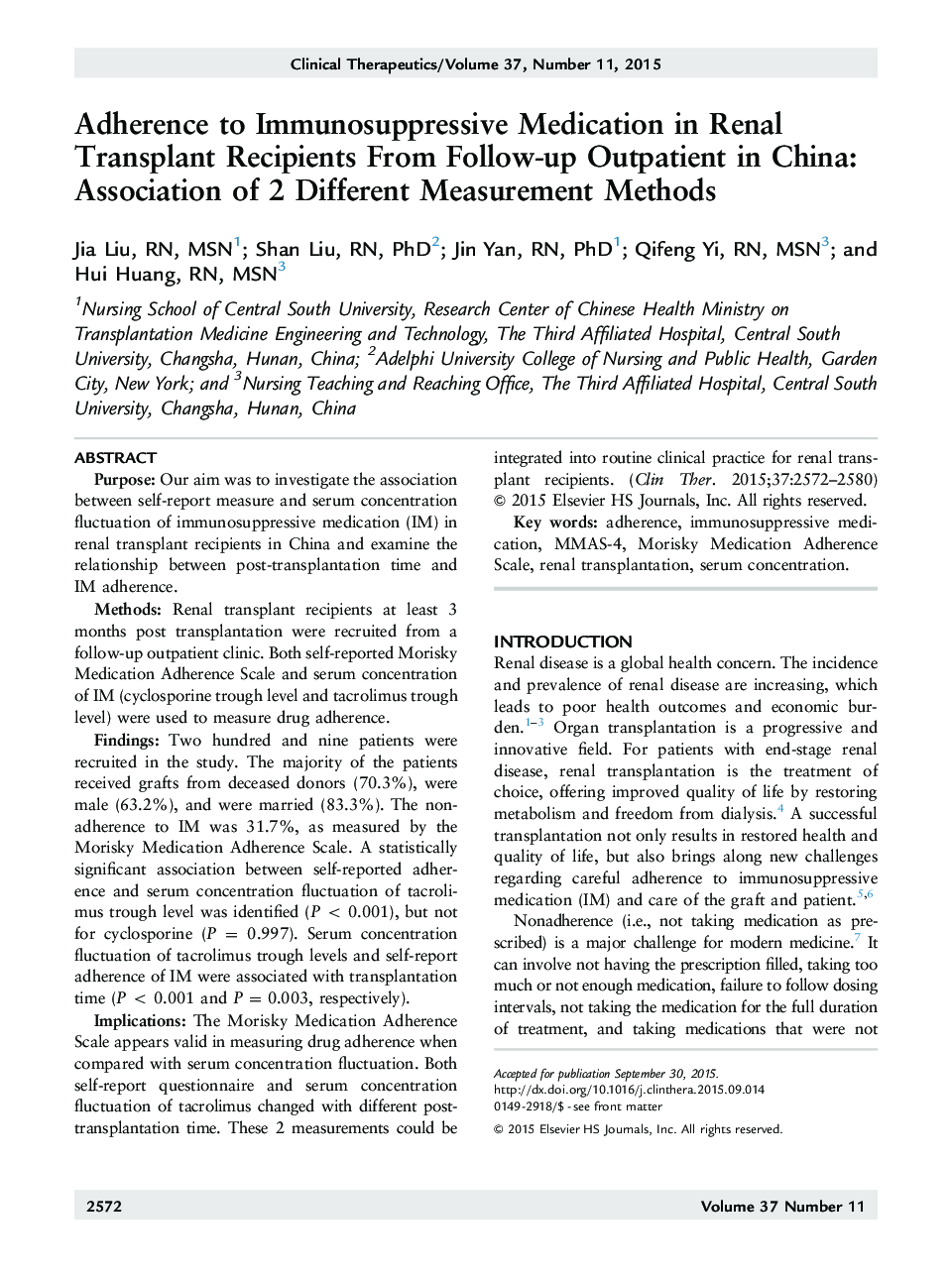| Article ID | Journal | Published Year | Pages | File Type |
|---|---|---|---|---|
| 5824820 | Clinical Therapeutics | 2015 | 9 Pages |
PurposeOur aim was to investigate the association between self-report measure and serum concentration fluctuation of immunosuppressive medication (IM) in renal transplant recipients in China and examine the relationship between post-transplantation time and IM adherence.MethodsRenal transplant recipients at least 3 months post transplantation were recruited from a follow-up outpatient clinic. Both self-reported Morisky Medication Adherence Scale and serum concentration of IM (cyclosporine trough level and tacrolimus trough level) were used to measure drug adherence.FindingsTwo hundred and nine patients were recruited in the study. The majority of the patients received grafts from deceased donors (70.3%), were male (63.2%), and were married (83.3%). The nonadherence to IM was 31.7%, as measured by the Morisky Medication Adherence Scale. A statistically significant association between self-reported adherence and serum concentration fluctuation of tacrolimus trough level was identified (P < 0.001), but not for cyclosporine (P = 0.997). Serum concentration fluctuation of tacrolimus trough levels and self-report adherence of IM were associated with transplantation time (P < 0.001 and P = 0.003, respectively).ImplicationsThe Morisky Medication Adherence Scale appears valid in measuring drug adherence when compared with serum concentration fluctuation. Both self-report questionnaire and serum concentration fluctuation of tacrolimus changed with different post-transplantation time. These 2 measurements could be integrated into routine clinical practice for renal transplant recipients.
